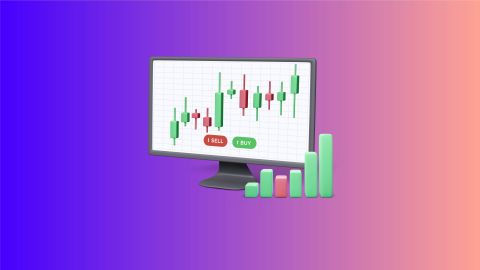Types of debentures
Let us learn more about the different types of debentures:
1. Convertible debenture
- A convertible debenture is a type of debt instrument that provides the holder with the option to convert the debenture into equity shares of the issuing company after a specified period.
- This conversion feature allows investors to benefit from potential capital appreciation if the company's stock price rises, thereby transitioning from being creditors (debt holders) to shareholders.
2. Non-convertible debenture (NCD)
- Non-convertible debentures are debt instruments that cannot be converted into equity shares. They remain as fixed-income securities throughout their tenure.
- NCDs offer investors regular interest payments at a predetermined interest rate until the maturity date, providing a predictable income stream.
3. Registered debenture
- A registered debenture is a debenture for which the issuer maintains a register of debenture holders. These debentures are linked to specific investors, and the issuer has a record of the holders' names and contact information.
- Registered debentures provide a level of security for investors, as they can be easily traced in case of loss or theft.
4. Unregistered debenture
- Unregistered debentures, in contrast to registered debentures, do not have a specific record of individual debenture holders. They are considered bearer debentures.
- Unregistered debentures can be transferred more easily, as they do not require a formal transfer of ownership, making them more convenient for trading in the secondary market.
5. Redeemable debenture
- Redeemable debentures are debentures that come with a specific maturity date. The issuer is obligated to repurchase them from debenture holders at face value upon maturity.
- Investors receive both periodic interest payments and the return of the principal amount upon maturity, which provides clarity on when the investment will be repaid.
6. Irredeemable debenture (perpetual debenture)
- Irredeemable debentures, also known as perpetual debentures, do not have a fixed maturity date. They continue indefinitely, and the issuer has no obligation to repurchase them.
- Investors receive periodic interest payments, and the principal amount remains invested, with no specified date for redemption. These debentures offer a perpetual income stream.
7. Secured debentures
Secured debentures are backed by the company’s assets, ensuring that in the event of a default, debenture holders can recover their investment through these assets. Holders of secured debentures have a legal claim on the collateral tied to the debenture.
8. Unsecured debentures
Also referred to as naked debentures, these are not backed by any collateral. Their repayment relies solely on the issuing company's financial stability and creditworthiness. While they carry a higher risk than secured debentures, they typically offer greater returns to compensate for the risk.
9. Convertible debentures
Convertible debentures come with the option to be converted into equity shares of the issuing company after a predetermined period. These debentures appeal to investors seeking long-term growth potential, as they provide an opportunity to gain ownership in the company.
10. First mortgage or preferred debenture
First mortgage or preferred debentures take priority in asset realisation, ensuring that their obligations are settled first in case of liquidation.
11. Second mortgage or ordinary debenture
Second mortgage or ordinary debentures are repaid only after the obligations of first mortgage debentures have been fulfilled during asset realisation.
12. Partially convertible debentures
Partially convertible debentures are debt instruments that can be converted into equity shares, but only up to a specified limit or percentage. As a hybrid security, part of the debenture transitions into company shares, while the remaining portion continues as a fixed-income investment.
Each type of debenture serves different investment and financing purposes, catering to the needs of both issuers and investors with varying financial goals and risk preferences.
Difference between a debenture and a loan
Let’s explore the difference between a debenture and a loan:
1. Debenture
- A debenture is a type of debt instrument issued by companies to raise capital.
- It is not secured by physical assets or collateral.
- Debentures promise to pay interest and principal to the debenture holders.
- Companies issue debentures to investors, and these investors become creditors of the company.
- Debentures are typically used for long-term financing.
2. Loan
- A loan is a sum of money borrowed from a lender.
- It requires repayment with interest over a specified period.
- Loans can be secured or unsecured:
- Secured loan: Backed by collateral (such as property or assets). If the borrower defaults, the lender can seize the collateral.
- Unsecured loan: No collateral is required, but interest rates may be higher.
- Banks and financial institutions typically issue loans to individuals and businesses.
While both loans and debentures involve borrowing money, the primary difference lies in security. Debentures are generally unsecured, relying on the issuer’s creditworthiness, whereas loans may be either secured with collateral or unsecured, depending on the agreement with the lender.
Advantages of debentures
Advantages
|
Disadvantages
|
Fixed and predictable returns that provide investors with a reliable income stream
|
Credit risk because unsecured issues depend entirely on the issuer’s financial strength
|
Secured options offer the safety of principal since they are backed by the issuer’s assets
|
Inflation risk since fixed interest payments may lose purchasing power over time
|
Diversification benefits, allowing investors to expand their portfolios beyond equities
|
Limited capital growth because these instruments do not benefit from increases in company value
|
High liquidity because many issues can be traded in secondary markets
|
Interest rate risk because rising market rates reduce the attractiveness of fixed returns
|
Stable fixed returns that provide consistency even in volatile markets
|
Potential loss of principal if the issuer defaults, especially in unsecured forms
|
What are the risk factors while investing in debentures?
Investors should be aware of potential risk factors when considering debenture investments:
- Credit risk: Assess the issuer's creditworthiness, as default can lead to losses.
- Interest rate risk: Understand the sensitivity of debenture prices to changes in interest rates.
- Liquidity risk: Some debentures may have limited liquidity in secondary markets.
- Market risk: Be prepared for price fluctuations in response to market conditions.
Debenture Stock
Although a debenture and debenture stock are often mistaken for one another, they serve different purposes. Organisations issue the former as debt securities to raise funds, while the latter resembles preferred stock. Investors who hold debenture stock receive dividend payments at fixed intervals, paid from the issuer’s profits.
Debenture stocks carry a similar risk level to other equity investments, but they are secured by a trust deed. This trust offers a degree of protection, allowing stockholders to appoint receivers to liquidate assets if necessary to recover their investment.
In summary, debentures are considered a safer investment. They offer a fixed interest rate regardless of the issuer's profitability, and debenture holders have priority in asset liquidation. However, frequent issuance of debentures can negatively impact a company's balance sheet and creditworthiness.
Conclusion
A debenture offers a versatile means for companies to raise capital and for investors to earn returns. Some debentures may convert into equity shares, while others provide regular fixed income, catering to different investor needs. They are useful for businesses seeking growth capital without pledging assets. For investors, debentures offer relatively stable income, though they do carry risk due to the lack of collateral. Understanding the types, terms, and associated risks is crucial before investing. Overall, debentures present a valuable financial tool, provided both issuers and investors assess their options with clarity and caution.





